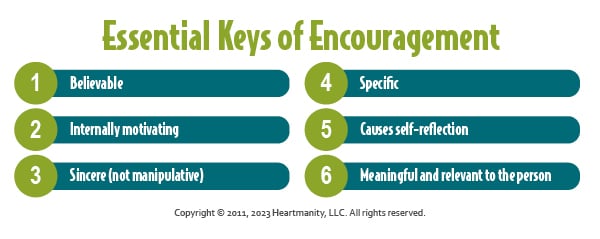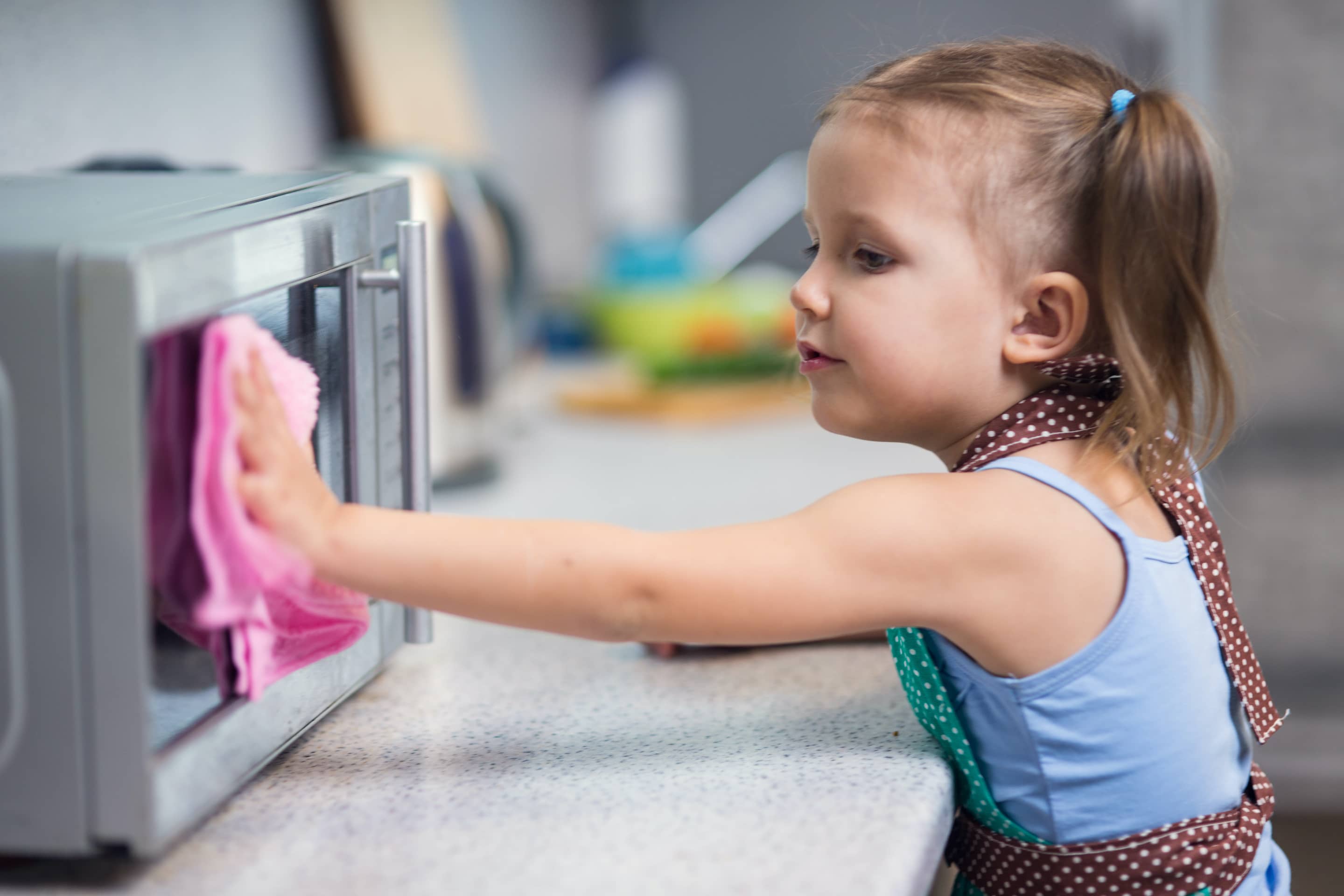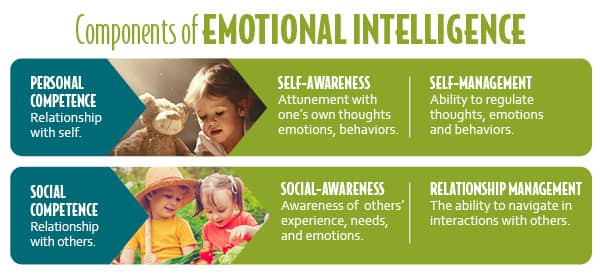Most parents want to spare their children hurt or heartbreaks. But let’s be real—struggle and pain are a natural part of life. What we can do is equip them with resilience, emotional intelligence, and EQ skills to navigate life’s curveballs.
Give your children the tools to build enriching experiences and relationships. Find out how!
Estimated reading: a long read, but skip to what interests you for a 2-minute read!
 Heartmanity is proud to partner with outstanding companies that we wholeheartedly recommend, so this post may contain affiliate links. You can read our full disclosure here.
Heartmanity is proud to partner with outstanding companies that we wholeheartedly recommend, so this post may contain affiliate links. You can read our full disclosure here.
Table of Contents - jump to what piques your interest!
What Is Emotional Intelligence?
How Emotional Intelligence Can Benefit Your Child
Five Components of Emotional Intelligence
37 Effective Ways to Raise Emotional Intelligent Children
Conclusion
Frequently Asked Questions
To begin, let's unpack what emotional intelligence is.
What Is Emotional Intelligence?
Emotional intelligence (EQ) is how aware you are of your thoughts and emotions, how you regulate and express emotions, and how you respond to others’ emotions.
From waking up in the morning to winding down in the evenings, your EQ allows you to navigate the daily twists and turns. Whenever you keep your cool or tackle your to-do list items, you tap into your emotional intelligence quotient or EQ.
| Emotional intelligence is divided into five elements: self-awareness, self-regulation, motivation, social skills, and empathy. How emotionally intelligent you—and your children—are depends on how developed these abilities are! |
How Emotional Intelligence Can Benefit Your Child
Emotional intelligence is a sign of maturity. The more emotionally mature we are, the less we react without thinking. We can surf disappointments with resiliency and bounce back without skipping a beat.
As adults, we can’t stomp our feet and have a tantrum whenever things go wrong: A missed deadline, an ill-timed speeding ticket, muddy footprints on a newly steam-cleaned carpet. Whatever comes, an emotionally intelligent person doesn’t let curve balls throw off their mood.
However, a young child is only beginning to explore and interact with life, so disappointment affects them differently. They exist in their own little world where etiquette, deadlines and detergent are insignificant! To them, a major disappointment is their ice cream dropping off their cone and splatting on the cement!
Emotional intelligence is the deciding factor between a preschooler who throws a temper tantrum and one who takes deep breaths and calms, between a teen who lashes out at a teacher for a poor grade and one who asks how they can improve. While all angry reactions are understandable, how they respond will get dramatically different results.
Building emotional intelligence helps children to effectively handle the unfamiliar, disappointing, and challenging experiences they’ll encounter. Research also shows low emotional intelligence is a precursor for anxiety and depression. The opposite is true when a child has EQ skills.
Children who show signs of high emotional intelligence may:
- Identify a feeling and understand why they feel a certain way.
- Regulate their emotions and reactions and respond instead of reacting.
- Have better focus and attention; set goals for themselves.
- Get curious about things they don’t understand.
- Stay motivated during dull moments and calm at difficult times.
- Communicate their feelings, preferences, desires, and needs with others appropriately.
- Empathize with others 1-on-1 or in group settings.
- Have the confidence to pursue their passions.
- Thinking skills restrain impulsive decisions.
With these abilities in mind, here’s how you can help your children and teens strengthen their EQ skills.
37 Effective Ways to Raise Emotionally Intelligent Children and Teens
Now that we’re on the same page, let’s lay the building blocks in your children’s developmental years. Cement the emotional intelligence competencies so you’ll feel confident when it’s time to remove the EQ training wheels and send your teen into the world.
This list below is not exhaustive, but it’s 37 sure-fire ways to cultivate emotional intelligence—a great starting point! Pick your favorites, create family rituals that create connection, and build your EQ skills right along with your children's!
#1 - Lead by Example
Children don’t always do as they’re told… More often than not, they like to mimic our actions. Little boys will watch their dads shave in awe, hoping to grow a beard just like the one he has.
They play the same games, eat the same foods, and support the same teams. A boy might adapt his dad’s habits for better or worse.
Let’s take Jimmy, an 8-year-old boy whose dad is a sore loser. If Dad reacts with anger at his football team losing a Sunday game and is in a bad mood for the rest of the day, then Jimmy might have a flare-up when one of his teammates misses a goal in soccer.
It never works to tell your children to do what you say and ignore what you do. My childhood is a prime example. Both my parents smoked: my mom cigarettes, my dad a cigar. My two brothers and I were caught smoking red-handed—and I was only five!
A wiser approach would be adapting healthier habits throughout your day-to-day life.
Your actions—not words—are the best teachers!
A wise man once said, “There are three ways to parent: 1) model, 2) model, 3) model.
#2 - Identify Positive Role Models and Discuss Them
You are the first role model your child will ever meet. Make sure you’re a positive one!
Besides setting an excellent example for your child, it’s important to introduce them to other potential role models. Seeing more adults with a positive outlook and a can-do attitude may influence them to have the same.
First, look at your immediate family: Your siblings—their aunts and uncles—and anyone else who lives in the home. What might they appreciate about each one? Do any teachers, coaches, or neighbors in your community stand out?
If you are drawing a blank, ask your child, “Is there anyone you really look up to?” With the rise of social media influencers, they may be following someone you’re unaware of on TikTok. Don’t minimize their interests. Get curious about what they admire in them. Is it their success? Their humor? Their courage? By creating a discussion, you’ll learn a lot about what your child values and be able to guide them to understand themselves better.
Whether they prefer superheroes or princesses (or both!), your child’s favorite fictional characters are also a great starting point for a conversation. Even historical legends, famous figures, feminists, and civil rights leaders might’ve wiggled their way into your child’s heart!
Keep their role models top of mind and build on each conversation. Share defining moments and people in your life who were influential.

#3 - Teach Responsibility and Accountability
Responsibility means consistently doing what is required to live in a family and community and holding ourselves accountable.
Accountability may be a big word for the little ones. You can start small by teaching them how to keep their word. They may still be at the tender age where pinky promises feel sacred. Lean into that! Toddlers can pick up their toys; preschoolers can help dry dishes at dinnertime. Young children can learn responsibility through small tasks that you enlist their help with.
Encourage age-appropriate activities for children to help them learn life skills.
For an older child, if they have committed to taking the trash out on the weekends, Sunday shouldn’t pass without them hauling the bag to the bin. If they need to put their laundry away, nudge them if their clothes are still on the edge of their bed. Incentivize by letting them know that they’ll be able to enjoy that X-box game or their favorite TV series as soon as their chore is completed.
Another great motivator is doing activities WITH our child, not just expecting them to "chore away" on their own. Use it as an opportunity to spend time together and capture precious moments for conversations.
As they grow older, you can up the ante: Give them the responsibility of keeping your car clean or consider giving them the pet they’ve been asking for! Caring for an animal is a great bonding experience and teaches them responsibility—just make sure you don’t end up cleaning the litterbox or walking the dog yourself!
And don't let a Roomba steal your children's opportunity to contribute either!
| By keeping children and teens true to their word, you hold them accountable for their actions (or inactions). Encouraging children to contribute in the home provides a feeling of being valued and a greater sense of belonging. |
Related reading: "Stop! These 5 Things Will Destroy Responsibility in Children"
#4 - Emphasize the Power of Gratitude
You can’t go wrong with an attitude of gratitude!
Encourage it daily. Implement it as a family ritual. Or start a gratitude journal yourself and suggest your child express what they are thankful for at dinnertime. Writing down what we’re grateful for is even more effective than saying it out loud—and then we have a record of it when we’re in a mood.
One study confirmed that grateful teenagers were less envious and materialistic than teens who weren’t. From being happier to having better grades, those who practiced gratitude were more satisfied with their lives. Gratitude is especially uplifting with the ups and downs of life.
Children won’t immediately recognize how much everyday things they enjoy cost. What may seem like “just a laptop” to them might’ve required a bit of saving and budgeting. When you spot a possible sense of entitlement budding, such as leaving the lights or a heater on overnight, a half-eaten bag of chips in the trash, or a LaCroix left half full on the counter, keep a running list. At the end of the week or month, show them how much was wasted and what they could have bought with the same amount of money.
While we know the price tag for these items and how fast they can add up, they’re often not privy to the grocery receipts or the electric bill. Depending on how old they are, engage your children in budgeting. Have them track waste for a month and then add up the costs.
Involve them in decisions about what is considered essential and what is not. We did this as a family when my kids were young, and I was surprised by their answers and decisions. They would rather have fresh fruit on hand than soda; they didn’t value chips and only wanted them when their friends were over. And they suggested putting the money saved by fewer snacks toward a laser park or a vacation.
Talk about money. Teach your children a healthy relationship with money. Give them practice early on while you’re there to mentor and support them.
EQ Resource: “Emotional Intelligence: What It Means for Kids.”
#5 - Model Spreading Kindness
Kindness is learned by feeling the experience.
One dad told how they were returning from a concert, and the youngest fell asleep in the back seat. The father took off his coat and covered the boy. As they drove home, the older boy asked his father: “If it were me in the backseat sleeping, would you cover me with your coat?”
Children learn kindness by experiencing it and watching the hundreds of ways we show kindness.
Being kind is showing the people around us that we care. The father above was being empathetic with this simple gesture. Do not underestimate your example. Foster kindness.
#6 - Cultivating Acceptance by Embracing Shortcomings
Making mistakes or failing doesn’t make you a failure; it makes you human. While you might recognize that shortcomings are a natural part of life, your child may take them personally as proof of their inadequacies.
Instead of focusing on the “could-haves” and “should-haves,” inspire children to celebrate their failures and lean into challenges. Teach the acronym FAIL, which means “first attempt in learning.” Learning requires mistakes and what many refer to as failing. Failure is a prerequisite to success.
#7 - Build Resilience
Resilience, a vital EQ skill, is the ability to bounce back from setbacks and disappointments. Here are ways you can help build resilience in your child and assist them in welcoming failures:
Ways to Teach Resilience to Children
Think beyond failure.
Accept failure as a legitimate stepping-stone to success.
Talk about failure openly.
Discuss how people overcame failure to succeed, such as Thomas Edison “failing” a thousand times while trying to invent the light bulb. In his own words, “I didn't fail 1000 times. The lightbulb was an invention with 1000 steps.”
Don’t make “failing” a dirty word; make it a stepping-stone to greater mastery.
Focus on the upsides.
Teach children to highlight the small ways they’ve succeeded or had a breakthrough. When they put their attention on the ways they are improving, it is less likely for disappointments and failures to discourage them.
Avoid intervening.
Encourage children to push on with challenges, self-calm their frustrations, and learn to solve their problems. The satisfaction of success imprints the brain more thoroughly.
Recognize their failures; reflect on the lessons learned.
Every setback is a way to identify ways to learn and grow. Help them recognize this fact.
Reward their efforts, not only results!
This mindset is critical when facing failure. Learning that when we give 100% is a success in and of itself allows us to keep trying. Rewards release dopamine and serotonin, which increases the likelihood of future successes since the brain anchors rewards but not failure.
Celebrate progress and small wins.
Reward and celebration imprint the brain more securely and propel us forward.
Remind them they have never stayed on the ground after falling when learning to walk or ride a bike. Otherwise, they’d still be there right now! With every trip and stumble, they kept going. Why should this setback be any different?
Related reading: "How to Encourage and Positively Talk About Failure to Your Child."
#8 - Widen Their Emotional Vocabulary
“Use your words.” How often do you find yourself telling your little one that? Young children typically struggle to verbalize their feelings.
It can be frustrating to decipher the hidden meanings behind their pouts and scowls. You can avoid this conundrum by crafting a more comprehensive emotional vocabulary for them as they grow older. Give them an emotional vocabulary that furnishes your child at the appropriate ages with words to label their feelings.
Start by putting a fun twist on the game Charades. Instead of acting out phrases, do facial expressions and ask your child to guess what feeling the expression is. You could also add sounds like giggling, crying and sighing to the mix.
Once they start catching on, explain where those facial expressions and sounds might pop up in their everyday life. Talk about varying situations at school or a friend’s house and have them identify the feelings. This practice helps a child build emotional literacy and awareness.
#9 - Help Children Learn Self-Compassion
Nothing encapsulates compassion better than the idea of being kind to one’s self. However, this is one of the hardest things for most adults. Don’t let that be the case for your child when they grow up!
Self-compassion entails treating ourselves with kindness despite how inadequate, disappointed, or angry we may feel. Practicing self-compassion translates to nurturing and accepting self-talk. Much of self-compassion begins with encouraging self-talk.
So, the next time you hear your child down on themselves, empathize! Then, help them understand the power they hold: they get to decide how to respond, resulting in how they feel.
#10 - Teach How to Give and Receive Feedback
Feedback helps us grow, develop skills, recognize our strengths and weaknesses, and motivates us to strive and improve. However, constructive feedback is an art.
Let’s say your preteen insists that her little sister’s macaroni art is ugly. Those words can be hurtful. And her sister has no information whatsoever to improve. However, preteens and teens often have a lot of great ideas and experiences to share. Help older siblings be more specific, caring, and supportive, such as saying:
“Macaroni art can be tricky. Your picture is really taking shape. Try using less glue. You can put some on a piece of paper and apply with a toothpick or Q-tip; that way, your picture will stay neater—and so will your hands! And look at this picture of a rose; it has lots of petals; maybe add extra macaroni here to make an even prettier flower!”
Now that is helpful feedback: specific, useable, and encouraging. Below are the key ingredients of feedback. You don't have to use all of these every time but strive to include a few each time.
 Research confirms how important effective feedback is in these studies.
Research confirms how important effective feedback is in these studies.
One study found encouraging feedback was more effective than telling children where they went wrong. They were able to bounce back more quickly and achieved better results! (Resiliency at play!) Giving and accepting feedback calmly and respectfully demonstrates high emotional intelligence.
One of the most vital ingredients for a child’s self-esteem is validation. According to another study, children who receive positive feedback are calmer and better behaved than those who don’t. In this research, Psychologist Sue Westwood points out a few of the ways to encourage children:
Catch your children and teens when they are excelling, and commend them.
So often, we only respond when children are misbehaving. Turn your attention to the positive, and you’ll quickly notice a shift in their mood and behavior.
To illustrate the power of this recommendation, I'd like to tell you a true story. Dr. Rudolph Driekurs was brought into a classroom for observation. The teacher complained about one particular student whose handwriting was illegible, saying that she had "tried everything!" Driekurs intently watched the child for a short time; then, he pointed to an 'o' and told him how well done he had printed that letter.
The boy practiced his o's for days and then something magical happened: his entire penmanship dramatically improved!
This is the power of positive reinforcement!
Describe what you appreciate specifically.
For example, “It was so delightful when you volunteered to help your sister with the dinner clean-up last night even when it wasn’t your turn. And your attitude was cheerful and uplifting. Thank you.”
Saying "great job" doesn't give helpful information to your child. Being specific helps them duplicate positive behaviors more readily.
Highlight the effort, not the ability.
This focal point is critical to instilling a growth mindset in children. Observe when your child is asserting themselves and highlight it, making that the focal point of your validation. This not only reinforces the growth mindset but also encourages children to appreciate effort versus talent; determination versus "getting it right."Watch for little improvements.
We all need to know we’re improving; sometimes, we don’t even realize it. Make a point to notice the small ways your children are doing better and recognize them. The brain values what we value!#11 - Cultivate Healthy Communication
From clubhouses to cubicles, communication is vital in every stage of our lives. Communication is the way we share ideas and thoughts, resolve conflicts, express feelings, and share our deepest goals and values. It can be verbal (e.g., words, tone) or non-verbal (e.g., eye contact, facial expressions).
Emotionally intelligent children rely on two essential elements to communicate: empathy and social skills. When equipped with these skills, children can better navigate social situations, make lasting friends, and understand their own and others’ feelings. And a third skill that is often undervalued or recognized is storytelling.
The Neuroscience of Storytelling
Brain research points out the melding that once occurred in storytelling as a ritual around campfires. In an article, The Neuroscience of Storytelling, this practice allowed for profound sharing and what Princeton University Researcher Uri Hasson referred to as "extensive neural coupling" between speakers and listeners when they shared stories with one another. "It's like having a mind-meld."
Parents need to give their families an opportunity for this kind of sharing for deeper bonding (which releases dopamine and oxytocin) as well as their kids' development of communication skills! Carving these opportunities is especially critical during teenage years as teens relate to and bond more with their peers.

Ways to Help Your Child Communicate in Groups
Here are a few ways to assist your child in learning better communication in group settings. The more practice conversing at home, the more comfortable and adept they become.
- Dinner Time: Provide opportunities for children to recap events from their day in a safe and nonjudgmental space. Or they can share the peaks and valleys of their day or week.
The benefits: These simple rituals let a child know that their experience matters and requires them to check in with themselves, how they feel, and identify what’s important to them. It can also be a springboard to meaningful dialogue as a family. - Weekly Movie Night: Family movie nights are still a favorite among families—a time that includes all ages.
The benefits: This routine is something a child and teen can count on. It encourages them to verbalize their likes and dislikes of movies. When each family member gets to choose in a rotation, it also helps children speak up and resolve conflict or sell an idea. The best part is sharing their favorite (or least favorite) parts of the movie. These are all great primers for building communication skills. - Storytelling Exercise: Each child weaves a story to tell the family that must be appropriate for all ages present. As stated above, this skill is vital as a foundation for relationships and communication.
The benefits: This simple activity gives children a regular chance to practice impromptu thinking, develop creative and sequential thinking, and practice listening intently to others. Practicing storytelling also helps them learn how to invoke surprise, hook attention and get an emotional response.
Every one of these mini-skills is essential to effective communication, listening, and building confidence in social interactions.
Communication starts at home. It’s where children share their first words, take their first steps, and are surrounded by people who love them. What better place to learn and grow?
As parents, it’s our job to ensure they have the confidence and communication skills that translate well in the real world. Only then can they form healthy relationships!
#12 - Promote Active Listening
There are moments where our silence is a greater comfort than our words. In those moments, we listen intently, make eye contact and keep our opinions to ourselves. It might’ve taken a few years—and some mistakes along the way—but we eventually got the hang of it!
Your child is… still learning. Whether toddlers or waxing teenagers, they may occasionally miss the cue that their friend needs to feel heard. Missing that cue can lead to awkwardness or tension—or even rejection. Missing communication cues can cause a child to talk when listening is needed or remain silent when their input could be impactful.
While hearing allows us to understand the other person; listening means actually ‘seeing’ them. Hearing entails recognizing the words spoken; listening consists of recognizing the tone, facial expressions, urgency, and meaning and emotions behind those words.
|
In its simplest form, active listening is giving someone else our full attention as they communicate their thoughts. Think of it as offering the spotlight to someone else. We set aside our own ideas and feelings to focus on another. |
The best way to teach children active listening is by actively listening to them: Smile encouragingly, stay focused and ask follow-up questions. Over time, your child will integrate these habits from your 1-on-1 interactions.
#13 - Teach and Encourage Children to Set Healthy Boundaries
A boundary is an invisible line separating behavior we accept and don’t tolerate.
One of the greatest advantages of setting consistent and healthy boundaries or limits for your children is how they internalize the process. However, they will still need your support in setting boundaries for friends, siblings, and peers. It’s helpful to have conversations about speaking up for themselves and advocating for what they want.
Then, these topics can lead to discussing different ways of setting boundaries. Start small, e.g., stating preferences for movie night or saying they don’t want to go to a family event that collides with a friend’s birthday party. Setting boundaries first with family members provides safety when the results can be monitored, influenced, and supported by you.
Then, work up to bigger boundaries, such as turning down a party because your teen knows drugs will be there. Or they agree to put their phone away two hours before bedtime or get off social media and help their brother or sister with homework.
Boundaries ensure your child stands their ground in the face of disrespect, trouble, and emotional triggers.
Related reading: "Parenting Tips for Saying No and Setting Boundaries."
#14 - Encourage Cooperation in Your Family
Children love their independence; even toddlers explore on their own in wider and wider ranges. Even when your little one eagerly pours milk onto their cereal “all by themselves,” they're learning to self-govern—and maybe there will be spilled milk, but it’s worth it for independence’s sake! Teenagers can’t wait to get their driver’s license and be autonomous.
Of course, independence and autonomy are essential. However, in our current culture, individualism is applauded and highlighted far more than teamwork. Cooperation and teamwork are vital parts of family and navigating the outside world. I hear constantly from CEOs, managers, and supervisors how little their employees know how to work as a team. Know what? They learned teamwork—or not—at home growing up!
Your children and teens will need to work on group assignments at school. Or perhaps they’ll run a school paper or interact with teammates on a soccer or basketball team. Inspire them by telling them stories of what was accomplished by a team that would never have been by a single person.
Encourage teamwork at home frequently. By cooking or baking with your child, split the tasks between yourselves—you operate the oven, and they mix the ingredients.
Possible Observations:
- Do they insist on doing more or less?
- Do they get the work done without complaining?
- What is their attention to detail?
- Do they get distracted?
- Can they follow a recipe?
You’ll get to see firsthand how well they work independently and together. Do they get frustrated easily? Ah ha, they’ll need self-soothing skills. Do they take over a task for a younger sibling? … aww, they’ll need to learn respect for those slower and smaller than themselves.
Family is our first team.
What are your children learning in yours?
#15 - Model Resolving Conflicts Effectively
Conflict, whether clashing opinions, minor disagreements, or huge fights, is inevitable. Despite being frustrating, there are benefits to it, too!
Conflict gives us a peek into someone else’s head. It allows us to see a new perspective and actively listen to their viewpoint—IF we know how.
Family meetings are a great place to prepare children for conflict. For example, if you are debating where to go for Spring break, everyone will have a different opinion. Think of the meeting as a laboratory for practicing listening and resolving conflicting ideas. A perfect illustration of how difficult interactions outside of the home can be!
The goal is to be sincerely interested in others’ desires and perspectives. Get curious. The reasons behind a comment often reveal far more than the comment itself. What is meaningful to them? Strive for a win-win!
Seeing conflicts resolved successfully encourages your child to tackle their own head-on. Children who understand and are comfortable with conflict are more likely to communicate their feelings and allow others to do the same. This ability can help them develop stronger peer relationships and set healthier boundaries. Many are familiar with one of the alternatives: people-pleasing.
People pleasers are those who put the needs of others before their own. They avoid stepping on anyone’s toes and prefer to appease the other person than do what’s right for themselves.
Avoid these parenting pitfalls: “3 Hidden Parenting Mistakes that Promote People-Pleasing Behavior in Children.”
#16 - Teach Children How to Cope with Disappointment
Disappointment is a shared experience, and sadness is an emotion that cannot be avoided in life. We feel a tinge of it when a friend cancels a much-needed girls’ weekend or your spouse bails on a date night at the last minute. Or when we miss out on a huge sale or a promotion at work.
Our children will be faced with regular let-downs, too: a lower grade than expected after working super hard, not getting invited to a party, being cut from a sports team or having a sweetheart break up with them. These feelings can pop up whenever anything differs from what they hoped for or imagined or fails to meet their expectations.
They must learn that these disappointments are a natural part of life. Building resilience helps children withstand the ups and downs of life.
Learn Five Science-Backed Strategies to Build Resilience, and if you’re worried about your kids being prepared for life’s curve balls, read “Are You Worried Your Children Don't Know How to Cope?”
#17 - Show and Teach Emotional Regulation
Emotional regulation is how we moderate our emotions using healthy coping strategies. Let’s use a tantrum as an example.
Tantrums range from shouting and slamming doors to falling to the floor in a heap. If your toddler or teen exhibits signs of an outburst in the making, here are some ways to teach them emotional regulation.
When possible, take them somewhere quiet and secluded to talk. If distracted by the sights and sounds around them, listening will be more challenging. This simple action encourages them to step away in the future should another emotional outburst grip them.
The next step is to help calm them down. Younger children are more susceptible to the candle-blowing trick. Hold your finger out to them and let them pretend there’s a flame. Once they’ve started visualizing a lit candle, ask them to blow it out using deep breaths. With every exhale, your child’s heart rate slows and improves their physiological state, as confirmed in this study!
Older children also benefit from taking deep breaths. It soothes their nerves, reduces their tension and calms their anger. Empathize with them to assist in diffusing intense emotions.
Lastly, once they are calmer, ask them to describe how they’re feeling. Ask, “Did something upset you?” This question helps children to label their emotions accurately and what set them off.
Combining these methods can help them regulate their mood in the future. When children practice emotional regulation and coping mechanisms, it drastically reduces outbursts and disrespectful behaviors.
Deep dive into emotional regulation: "Why Should You Care About Emotional Regulation?"
#18 - Model and Encourage Self-Care
Incorporating me-time and self-care into your child’s routine can help them build a supportive routine, process emotions more regularly, and increase their awareness of their well-being (or lack thereof!).
Consistency is key!
People who have a self-care ritual are reportedly happier and less stressed.
Therefore, it’s imperative to teach your children the importance of monitoring and caring for their mental and physical well-being early.
A self-care practice will look different for every child and teen. Some will want to listen to music and relax; others want some outside time before doing homework. Some kids need solitude in their bedroom or to chat on the phone with friends. And teens have been known to enjoy an afternoon Netflix binge.
The Key Ingredients of Self-Care
The primary element of healthy self-care is that we feel ourselves again. We know it’s a great activity (or lack of activity) when it brings feelings of lightness, inner peace, or a feeling of ahhhh.
Talk with your child about the difference they feel when they haven’t gotten enough sleep and when they are well-rested. Or what’s present when they’ve had a bad day compared to a great one?
Ask them what helps them to feel their best. Have them make a list and keep adding to it as they discover new things. Then, encourage them to scatter these things throughout their week regularly.
Related reading: Parents Need Self-Care to Be Their Best Self
#19 - Demonstrate How Respect Requires Self-Control
Self-control influences how we regulate our emotions and prevent those emotions from getting the better of us. So, what’s the connection between self-control and respect?
Unlike other parenting advice that recommends punishing misbehavior and disrespect, I believe that we can't expect respect without giving it.
Respect is a two-way street.
Respect is earned.
Respect is the end result of learning and integrating EQ skills that are imperative in creating respectful and healthy relationships.
As a rule, parents don't intentionally mistreat or disrespect their children. But, a child’s failure to keep their feelings under control (as they're learning self-management) may result in them hurting yours. These are moments when we ourselves as parents can lose control, react, and treat our child or teen with disrespect.
Let’s say your child snaps at you after you’ve asked them about their homework, yelling something like, “Quit nagging me already!” How do you react?
"Don't you dare speak to me disrespectfully!" (If so, you may be denying what they are feeling and making it about your hurt instead of their learning.)
The next time your child reacts disrespectfully, consider asking yourself these questions before reacting:
- “What did I say or do previously that might have upset my child?”
- “Does my child usually snap like this?” (Is it a pattern?)
- “If yes, it’s time to have a heartfelt conversation to explore why.
- “If not, could your child’s outburst have been triggered by external factors, e.g., misplaced grief, a bully at school, a previous argument?”
Modeling self-control is a crucial way to teach it to children. When we are feeling emotional turbulence and yell or have regular knee-jerk reactions, that's what we're modeling.
Yeah, I know, a HUGE responsibility being a parent!
Expressing emotions appropriately and helping children manage emotions while advocating for themselves respectfully takes considerable practice.
Just remember you don't want to punish their emotions while disciplining them. Instead, connect the dots of their behaviors!
Teach children the connection between:
- increasing their emotional awareness—and respect!
- feeling, processing, and managing emotions—and respect!
- impulse control—and respect!
- greater awareness of their impact on others—and respect!
- the cost to relationships of uncontrolled emotions—and respect!
Deep dive: "How to Teach Self-Control and Respect to Your Children."
#20 - Teach Mindfulness
Mindfulness is being intentionally aware of where you are and what you are thinking and feeling. It's paying attention to what’s happening in the present moment without judgment.
Where resilience helps children to push past their setbacks, mindfulness allows them to be in the present. Mindfulness will enable them to zero in on the moment.
A daily practice can be doing yoga or putting their phones away at dinnertime. Disconnecting from their devices brings their attention back to the dinner table. Or to a lively conversation with their family, or it can also be a gratitude ritual.
No longer are they absorbed in ‘doomscrolling’ or obsessing about a frenemy or continually watching random TikTok videos. Mindfulness is a teen's bestie; it has the power to interrupt negative behaviors and allow them to choose a higher path.
Without the sound of notifications or the allure of a text from their friends, they have a chance to focus on the present moment. Intentionally making a good choice for our own well-being is stress relieving and teaches self-control. A practice of mindfulness enhances the quality of experiences!
We’ll go a step further and say your children may even appreciate spending time with family more!
#21 - Reinforce Emotional Intelligence
What nearly guarantees a child will have a successful career as an adult?
Emotional intelligence does, according to some research studies! This study linked higher emotional intelligence to greater academic performance. 
As seen above, the components of emotional intelligence work together to empower our children and teens to be well-rounded. Here is how the 5 elements break down.
- Self-awareness: Recognizing feelings and experiences.
- Self-regulation: emotions are modulated and expressed when responding to what happens.
- Motivation: internal and external factors are utilized to take productive action toward a goal.
- Social Skills: how well a person responds to and interacts with others.
- Empathy: understands and responds compassionately to the feelings of those around them.
Get your child on the right track—start teaching them these abilities early!
Related reading: Parenting Your Teen with Emotional Intelligence
#22 - Give Empathy Generously
Empathy is putting ourselves in the shoes of someone else. The best way to teach your child empathy is by modeling it and empathizing with your children.
Giving empathy can be as simple as acknowledging your child’s emotions or helping them interpret their feelings accurately. Allow them to feel and be right there to support them!
Encourage your children to show empathy, too. Whether offering a listening ear to a friend or helping a classmate, children have many opportunities to practice empathy in their daily interactions.
Deep dive: "Most Overlooked Secret to Peaceful Parenting: Empathy."
#23 - Cultivate the Growth Mindset
A growth mindset is a way of thinking that inspires effort and intrinsic motivation. Whether in academics or the arts, a growth mindset in children sets them up for success. Those who approach life with this love-of-learning approach are more likely to accomplish great things.
There are dozens of other benefits of a growth mindset in children:
- Broadens interests.
- Increases the likelihood of perseverance.
- Improves mental health.
- Fosters team-building.
- Develops problem-solving skills.
The opposite of a growth mindset is a fixed mindset. Children demonstrating a fixed mindset may:
- Cover up their mistakes.
- Flaunt their successes.
- Doubt that their efforts will make a difference, such as studying harder. However, effort and more time studying usually do improve grades.
A fixed mindset thinks "I only do well because I'm smart." - Believe that you have talent or you don’t.
- Get discouraged quickly when learning doesn’t come easily.
Fortunately, a growth mindset can be achieved through a positive and affirming approach. Instead of focusing on children’s errors or lower grades, highlight what they do well and applaud them for their efforts. Consider studying with them to build new mental muscles. Remind them of their successes and get them support where they need it.
For even more tips on shifting your child from a fixed mindset to a growth mindset, check out “Why a Growth Mindset for Kids Is the Key to Their Success.”
#24 - Help Children Set Goals
A growth mindset is characterized by the desire to keep going. From trying new things or turning their Ds to Bs, it’s helpful for your child to look forward to the future.
One way to guarantee greater success is through setting SMART goals. SMART is the shortened form of Specific, Measurable, Achievable, Relevant and Timely:
- Specific: Defined clearly and easy to understand.
- Measurable: Create a way to track progress.
- Achievable: A perfect blend of challenging but attainable.
- Relevant: Supports values or high interests and aspirations.
- Timeline defined: A timeline to work towards.
Playing the guitar for the first time as a third grader might be challenging. So much to learn! Go over the learning steps: the musical notes, chords, and finger positions. Share how you have set goals and been successful, too.
Encourage them to write a SMART goal, like “I will learn how to play Jingle Bells on the guitar by Christmas.” Using this goal, here is what it might look like:
An Example of a Child's Smart Goal:
- Specific: One piece of music, Jingle Bells.
- Measurable: practice for 30 minutes every day.
- Achievable: Learning one song is doable.
- Relevant: Interest in music and the instrument; way to enjoy the holiday season.
- Timeline defined: Christmas is a clear timeline.
Related reading: "How Values and Intrinsic Motivation Impact Achieving Goals and Increasing Happiness."
#25 - Prioritize Family Time
After a long day at school, children often retreat to their rooms or hop on their devices. Alone time is one of the ways they may choose to unwind. But just because it’s easy doesn’t mean it’s healthy, especially if done too frequently.
Quality family time involves connecting with those who love us, sharing our goals, laughing and conversing, and doing activities such as board games or outdoor hiking and camping. The more time spent together, the more likely children feel a sense of belonging.
Even having regular dinners together can boost children’s mental and emotional health. Studies reveal how crucial family time and family dinners together are.
“Family connectedness (i.e., feelings of love, warmth, and caring from parents) have been found to be protective against poor mental health or psychosocial outcomes, and the role of the family has long been studied as an important contribution to adolescent well-being.”
Teens also report having higher quality relationships with parents and sharing more with them when there are regular family dinners.
Make sure your lives are not too busy to carve family dinners and quality family time—it’s just too important!
Related reading: “Bringing the Preciousness Back into Family Time."
#26 - Minimize Screen Time
Gen-Z and Gen-Alpha have spent a lot of time online. It’s no wonder how attached they’ve become to their devices! They’re passively entertained with just a few clicks. However, too much screen time comes with a downside.
Screen time refers to all the minutes spent on an electronic device, usually a cellphone, tablet, video game, TV or computer. Some of the dangers of too much screen time are:
- Device addiction.
- Sleep deprivation.
- Physical discomfort, like eye strain.
- Low self-esteem and a dip in productivity.
So, how can your child limit their screen time?
First, children need to understand the harm that can come from too much screen time. Try explaining how other hobbies, like painting or reading, are just as entertaining (and more fulfilling!).
You can also encourage them to set their own guidelines. They could watch TV for two hours instead of four or limit their gaming time to weekends.
One time when my daughter was in elementary school, she told me she wanted the freedom to watch 5 hours of TV a day. Instead of battling with her, I asked her to add up that amount of time for an entire year and if she still wanted it, I would consider her request.
After completing this simple exercise, she returned shocked and outraged, announcing how much of her life she would be giving up to passive entertainment in a year's time. She rerouted her desire and made the decision to actually cut back on television time!
The power of connecting the dots!
Recognize that most children will do better when they know better. Involving your children in designing guidelines makes it more likely that they will follow them once agreed upon.
If you deal with power struggles, hear them out. It's possible they didn't have enough involvement in the decision. Or they may have realized the commitment wasn't doable and they need smaller goals to work up to the bigger change. Perhaps, they didn't realize how much they depended on screens and it's too big of a leap. Listen and renegotiate.
You want them to pay attention to their limits, what feels right and advocate for themselves—a crucial part of gaining self-awareness.
When a screen-time agreement has been reached, hold them accountable. Your child’s self-control will also play a vital role here! If need be, they can leave the device with you when they’re about to go to bed or their allotted screen time is up!
Related reading: Managing Kids’ Screen Time and Building a Healthy Kid-Parent Relationship
#27 - Support Children to Find a Creative Outlet
Creativity sparks something inside us like no other. For children, it is an opportunity to express themselves freely. And creativity is also vital for development, too.
A creative outlet allows children to release and process their emotions without fear of being judged or misinterpreted. Sometimes, the only audience they need is themselves. Art and creativity can be as simple as doodling and journaling or a more complex endeavor such as baking, songwriting, or pottery.
The time spent on screens can be replaced by starting a hobby like painting, writing, or learning an instrument. Art is therapeutic.
Don’t just watch from the sidelines!
Take an active interest in what your children are up to, what they enjoy, and what they are good at! Whether that means buying art supplies, sharing a hobby like scrapbooking with them or attending music recitals, your child will appreciate you taking part in their creative pursuits.
To see more benefits of fostering creativity: Spark Critical Thinking for Kids While Awakening Their Creativity
#28 - Encourage Self-Expression
Your daughter has suddenly become more fascinated with cosmetics than a year ago. Or, they insist on redecorating their bedroom and dumping out their childhood toys.
Self-expression is your child’s call to be seen and taken seriously. Like with art, children can express themselves through their sense of style. From decor to hair accessories, your child’s preferences are being defined and aching to be expressed in varying ways!
Let’s take an example of a woman we’ll call Michelle. Michelle is still coming to terms with her daughter, Abby, who takes her cues and wants to buy things advertised on Pinterest or TikTok! Right now, her love is for all things retro: Lava lamps on the nightstand, rollerblades in her closet. Last year, it was pastel colors and tiny cactuses!
By encouraging Abby’s need to express herself, Michelle is undoubtedly boosting her confidence. Parental interest and encouragement will help Abby feel validated with enhanced self-esteem, even if her tastes change as frequently as Montana weather. Her mother’s support is unwavering; yours can be, too!
#29 - Promote Problem-Solving and Thinking Skills
Given the rise in AI tools and homework apps, it’s easier for children to resort to using technology to do all the heavy lifting. Bye-bye to long division and research papers; hello to saving time, energy and brainpower.
Therefore, developing problem-solving and critical thinking skills just became even more critical!
Children who dabble in the discovery process are more likely to solve their problems independently. Their fortitude is especially true whenever they read the material or research different perspectives themselves rather than depend on AI or even other people.
One of the simplest strategies to cultivate problem-solving abilities in children and teens is to ask open-ended questions. Ask, don’t tell! Make them think instead of quick yes or no answers.
When parents consistently give answers to kids or bark directives to children regularly, our best intentions can backfire. Some of the effects can be:
- Passivity and dependence.
- Discourages initiative, problem-solving, and critical thinking.
- Inhibits cooperation; encourages compliance.
- Dampens natural leadership qualities.
- Robs the child of self-confidence.
Possible questions to ask your child to boost independent thinking:
- Who could help you with ?
- What is one thing you can do to feel better?
- How can you best handle ?
- What could you do differently next time to get a better result?
- How do you feel about ?
- What about that experience was meaningful to you?
- How does affect you? Others?
Don’t tell kids what to think; teach them HOW to think.
Avoid helping them with every challenge that comes their way. Allow them to struggle and exercise their ingenuity while supporting them from a distance with words of encouragement!
#30 -Build Self-Confidence
Teenagers are most susceptible to issues with self-esteem and low confidence. Hundreds of studies have linked self-esteem issues to an increased risk of depression and anxiety in adolescents.
Magazines and TV commercials were cause for frustration in earlier times. It was a challenge not to compare our bodies to that of celebrities and models being shown to us. Times have changed, but not by much. Now, our children have social media to blame for that, too!
The rise in beauty gurus, face filters and online diet trends may cause them to lack confidence in the way they look. Couple that with puberty, and we’ve got a crisis on our hands.
Self-confidence is a long road to travel, but it’s possible. Children need the right amount of validation to feel comfortable in their own skin. Don’t shy away from complimenting them and boosting their confidence.
This goes double for non-physical attributes, like their intellect or their sense of humor. With a bit of patience, you can help your child build a positive body image and the self-confidence to go with it!
#31 - Nurture Self-Motivation through Positive Self-Talk
Every parent knows how crucial motivation is in life, so you won’t be surprised that it is also an essential aspect of emotional intelligence. Motivation involves using internal (e.g., personal goals) and external (e.g., good grades) factors.
What your mind is saying (self-talk) is at the heart of motivation. Is it discouraging or encouraging, demotivating or motivating? The go-to way to cultivate positive self-talk is through raising awareness of what goes on in our heads!
Teaching kids to be good stewards of their minds and the power they hold through a practice of positive affirmations.
One study even confirmed that people who give themselves positive affirmations have a healthier response to stress and far, far fewer negative thoughts!
The end goal here is that these practices will encourage them to develop their own inner voice, helping them stay motivated in times of stress and strife!
#32 - Support the Value and Appreciation of Alone Time
Solitude is self-care! Children will have time to hone their inner voice once they spend some time by themselves.
Now, we understand how this may seem counterproductive when #25 was nudging you to incorporate more quality family time into their schedule but you’ll see why when we dive into the benefits of being alone!
Unlike family dinners and camping trips, time spent alone gives children the ability to slow down and gather their thoughts. Only in moments of quiet and calm can children practice self-reflection.
Self-reflection calls for focusing on your own actions and thoughts. Along with that, alone time can be devoted to fostering creativity and setting goals. One source even claims that 15 minutes of solitude may lead to a better grasp of emotional regulation.
Be sure to encourage practicing healthy habits during these moments alone. Instead of taking long naps or watching TV, encourage them to do something productive. Reading, writing, journaling and/or meditation come to mind.
Balance alone time with developing healthy relationships with friends and family is still just as important as spending time in solitude!
#33 - Emphasize the Benefits of a Meditation Practice
Balancing mindfulness, self-reflection, and meditation are all practices that support well-being. Meditation, in particular, has extensive research backing its benefits and effectiveness for mental health.
Some mental and emotional benefits of practicing meditation:
- Increases self-awareness.
- Improves patience and tolerance.
- Allows them to focus on the present.
- Grounds them during high-stress situations.
- Reduces anxiety.
It’s easier to incorporate meditation into your child’s daily routine than you may think. They can practice taking deep breaths before they start their homework, they can follow the breath patterns of their pet, or simply go for a walk in nature.
This practice is particularly recommended for preteens or teens struggling with anxiety or depression. Meditation has been found to help in these areas. Another fabulous support tool to calm your teen is the Apollo Wearable, with studies showing up to a 40% reduction in stress and anxiety. It has a great app for focus, too!
#34 - Recommend Journaling
Just like choosing a creative outlet, journaling has its perks when it comes to emotion regulation. People who practice daily or weekly journaling tend to have less mental distress. This study with adults struggling with “elevated anxiety” revealed that long-term journaling boosted their resilience against their negative emotions.
The goal of journaling is to process our experiences and emotions, brainstorm solutions to challenges, or just pen our thoughts and creativity.
Reasons Journaling Is a Great Fit for Children and Teenagers
- Reflection: Journaling allows your child to recap the day’s events to extract meaning and highlight successes.
- Planning: Children may also jot down their goals, wildest dreams and aspirations for the future.
- Tracking: Some children may use their journal to track their progress in personal goals, like the number of books they’ve read.
- Practice: Essays make up the majority of their homework and assignments, so journaling strengthens their writing ability.
Regardless of what they choose to write in their journals, honor their privacy unless they choose to share it with you.
#35 - Introduce the Power of Habits to Children!
By helping your children to understand the power of habits when they’re young, you give them an amazing lifetime tool!
Imagine if they could form positive habits across every area of their lives. What could that mean for them by the time they’re adults?
When I coach children and teens and teach them about how the brain works and why creating key habits make everything easier, they are thrilled. Teens especially LOVE easy, particularly with mundane or unpleasant activities. They’re shocked that no one has taught them this basic principle before!
|
Whatever we do repeatedly, the brain delegates to the unconscious powerhouse to optimize and be more efficient. Habits allow us not to have to think about something every time we do it, which creates incredible speed and efficiency. |
Watch this fun video of the backward bike to understand how the neural pathways work and the moment when they automate a pattern.
A great time to reinforce the concept of brain patterning is when teens start driving for the first time. They're SO excited—and there's SO much to remember that they get overwhelmed. (And parents are generally on edge, too!)
Explain when something is brand new for the brain, it feels clumsy and overwhelming until we do it a few times. That’s why it’s vital to form good habits, because whatever we do consistently gets downloaded as a program that’s automated.
The power of habits generates major ease for our lives UNLESS we form bad habits that work against us or turn into destructive habits that control us.
Here are a few simple habits that could help your children stay encouraged and be organized habitually!
- Whenever they're feeling overwhelmed, ask themselves: "What's one thing I CAN do in 15 minutes or less?" This technique helps to prime the pump and move us to action when stuck or overwhelmed.
- Write three things they did well that day before or after dinner.
- Get their school things ready the night before:
- Choose and lay out their clothes for the next day.
- Check homework assignments.
- Confirm project timelines.
- Pack their backpack with homework, needed schoolbooks,
and school supplies. - Pick snacks and pack their lunch in the morning.
- Tidy their bedroom quickly before brushing their teeth.
- Rinse dishes and put them in the dishwasher.
- Feed their pet at a certain time each day.
Whether it’s the simple habit of brushing our teeth or practicing piano or basketball, good habits make life easier!
#36 - Establish an Environment that Boosts Healthy Eating and Hydrating
Another habit that enhances our quality of life is maintaining a balanced and healthy diet along with ample hydration.
You’re probably wondering what this has to do with emotional intelligence!?
Here’s how this focus promotes higher EQ.
Making healthy diet choices strengthens your child’s self-control and decision-making while fortifying a healthy body.
Let me give you a personal example to illustrate. When my kids were young, we didn’t keep chips, candy, or soda in the house—only fresh fruits and vegetables. Since we didn’t have sweet drinks, they drank more water, which became a habit.
Even though my children complained that we didn’t have fun snacks, it became the norm—and they stopped lamenting. They may have even been slightly envious of how lucky their friends were UNTIL they started noticing how bad they felt whenever they ate chips and soda at a friend’s house. This observation (self-awareness) caused them to curb the amount of “fun foods,” ON THEIR OWN! And that action further confirmed their hypothesis.
Fast forward to young adulthood, all my children—without exception—adhered to healthier choices.
It’s not just about a healthy diet or proper hydration, though—it’s about forming a habitual lifestyle that supports mental, emotional, and physical health.
My decision to refrain from buying convenient snacks might seem unreasonable (my dad kidded me that not keeping candy in the house was child neglect! Ha-ha!). However, every time a child says no to something, they are practicing self-control. Saying no must be PRACTICED!
Remember: to build new neural pathways, we need regular action.
Setting limits for healthier living is no different. Later, the ability to set limits with small things transfers to being able to say no to bigger, more dangerous choices, such as driving under the influence of alcohol or drugs, etc.
|
Every time we make a healthier choice, we are training ourselves to be A sizeable list of EQ skills, wouldn't you say!? |
#37 - Celebrate Achievements
Let’s think of milestones as the steps on a ladder. Every accomplishment is one rung closer to gaining EQ mastery and getting to the top where your child realizes their dreams. Celebrate each small win! And also celebrate the struggles and failures along the way. Help them see that they impact every result by their efforts, decisions, attitude, and focus.
When you do celebrate, it’s best to reward your children with quality time with you or things that are meaningful to them.
- Did your preschooler go on their first playdate that they’ve been shying away from?
Celebrate them! Play dress up with them and crown them or take them to their favorite park! - Did your preteen win a debate with tough competition?
Celebrate them! Give their success the spotlight at the next family meeting and plan a special dessert. Even if they lost, honor their hard work, efforts, and passionately going after their goals. - Did your high schooler’s Chemistry grade jump from a C to a B? Celebrate them! A trip to the hot springs, waterpark, or tickets to a coveted concert might be just the thing!
Every small and big achievement is directly related to growing emotional intelligence. As you shine the light on their accomplishments, they also learn to be comfortable being in the spotlight and reveling in their efforts to make it happen! This focus teaches them not to settle or be in the shadows envying someone else. Great practice for owning success.
Conclusion
Most parents desire their children to grow up to be responsible, loving, assertive, free-thinking adults. As you can see, raising emotionally intelligent children needs to be a high priority. It provides the best foundation for a happy, healthy life.
Children are their own little people! Maturity and emotional intelligence look differently from toddler to toddler and teenager to teenager. If you need help recognizing and building emotional intelligence skills in your child, Heartmanity can help.
From the home to the workplace, Heartmanity is dedicated to spreading awareness and life skills of mindfulness and emotional intelligence. Transforming lives IS our business!
Frequently Asked Questions
Q: Is emotional intelligence learned, or are you born with it?
Emotional intelligence is a set of competencies that can be learned. EQ (or emotional quotient) is not a fixed quotient like IQ; the abilities are developed over many years in dozens of ways.
Of course, genetic influences are also a factor; however, since we can develop high EQ as adults regardless of our upbringing or DNA, it is clear that the resiliency and plasticity of the brain furnish amazing potential!
Q: At what age do kids develop emotional intelligence?
Building EQ in your child begins in the womb when the mother's emotions are communicated and felt by the fetus and embryo. As research says: "Like many other psychological traits, emotional intelligence is determined on one hand by genetic influences, and on the other by environmental influences."
We are all born with certain temperament traits, which is the genetic factor and then the environment and parents continue the emotional development, or not, through their example, parental responses, and the skills they teach their children.
For parenting support or help with parenting with emotional intelligence, contact us at support@heartmanity.com.








